Essay - Artificial Intelligence and the Future of Artistic Connection: When Machines Challenge Human Authorship
- Sérgio Luiz de Matteo
- Jul 26
- 14 min read
Introduction
Artificially generated art made a significant cultural splash in 2018 when Portrait of Edmond de Belamy, created by an algorithm, was auctioned for $432,500 at Christie's [1].
The painting, created by the art collective Obvious using a generative adversarial network (GAN) and a database of 15,000 portraits painted between the 14th and 20th centuries, was sold on October 25, 2018, far exceeding its initial estimate of $10,000. This event was widely reported as a historic milestone, being the first AI-generated artwork sold at a major auction house [1]. This landmark moment sparked an urgent debate: tools like DALL-E, MidJourney, and ChatGPT create works indistinguishable from human creations, but can they replace not just the technique, but the emotional connection we have with artists?
The paradox deepened in 2023 when Heart on My Sleeve — a song composed by AI imitating Drake and The Weeknd — went viral. The song, created by Ghostwriter977, a TikTok user, used AI to simulate the voices of Drake and The Weeknd and was released on April 4, 2023, on platforms like Spotify, Apple Music, and YouTube. It quickly amassed millions of views within a week. However, it was taken down on April 17, 2023, due to copyright complaints from Universal Music Group (UMG), Drake’s record label [2,3]. The public consumed the work avidly, but the controversy revolved around a disquieting absence: the lack of a "human face" behind the creation.
This essay explores how dematerialized authorship challenges our deepest notions of art and examines whether the absence of the human element will radically reshape our relationship with the artistic phenomenon.
Theoretical Foundations: Authorship, Aura, and the Ghost of the Creator
The Death of the Author Revisited
In his 1967 essay The Death of the Author [4], Roland Barthes argued that the meaning of a work should not be determined by the author's intentions but by the reader's interpretation. This shifts the focus from authorship to reception, emphasizing the freedom of the reader. However, AI radicalizes this concept: who is the true author of a DALL-E painting? The algorithm’s programmer, the user who input the prompt, or the machine itself? This ambiguity destabilizes the myth of the "genius creator," a cornerstone of Western culture since the Renaissance.
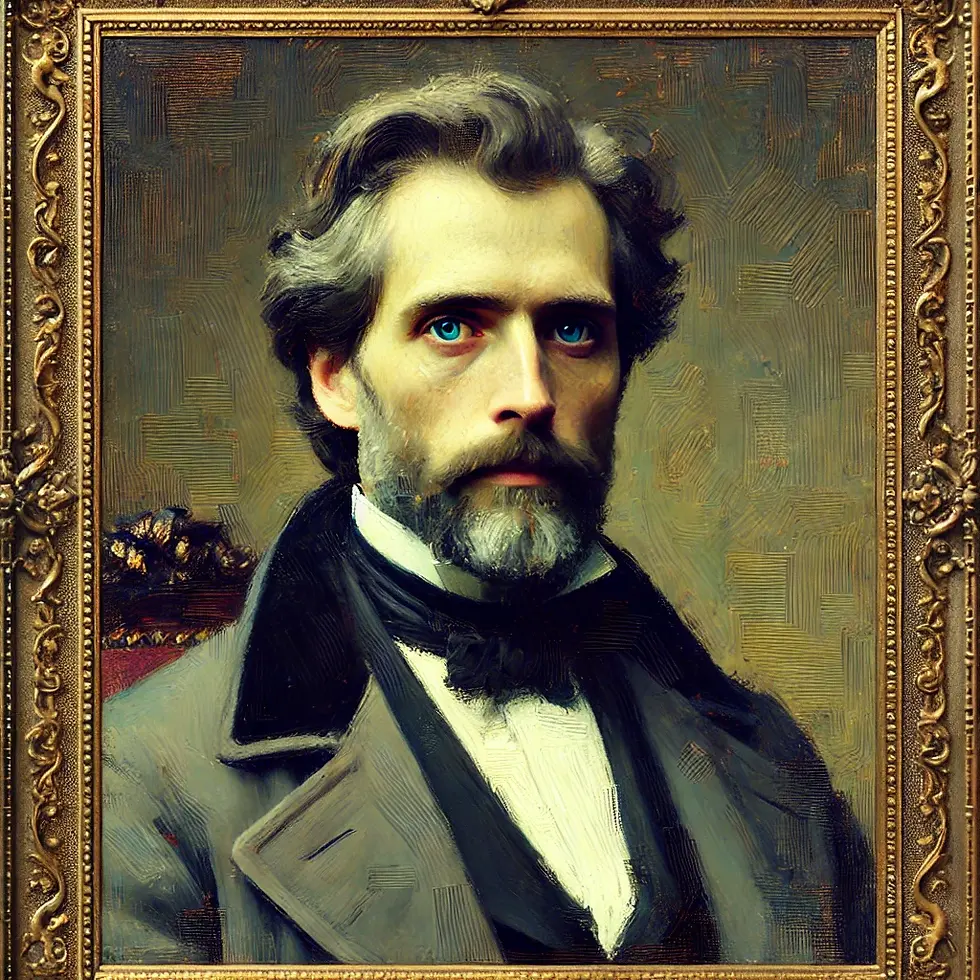
The Loss of Aura
In The Work of Art in the Age of Its Mechanical Reproducibility (1936), Walter Benjamin argued that technical reproducibility, such as photography or cinema, diminishes the "aura" of a work of art, which is its unique presence stemming from the authenticity and historical context of its creation. AI, by directly generating art, goes beyond mere reproduction, creating works that have never had a "human original," completely eliminating the aura in the Benjaminian sense [5].
Adorno and Horkheimer, in Dialectic of Enlightenment (1947) [6], criticized the cultural industry for commodifying art, reducing its capacity for resistance. They argued that authentic art must reflect human experience, including suffering and resistance, to maintain its autonomy and criticality. AI-generated art, like images from DALL-E or music from ChatGPT, not only lacks a "human original" but also lacks the traces of experience, emotion, or intention that characterize human creation. This eliminates the aura, as mentioned, and also raises questions about the authenticity and cultural value of these works, aligning with Adorno and Horkheimer’s view that they carry no marks of suffering, love, or rebellion.
Recent studies published in Frontiers in Psychology (2025) corroborate this gap: MRI scans showed that human works intensely activate the medial prefrontal cortex— a region of the brain associated with empathy—while AI pieces primarily stimulate the visual cortex [7, 8].

Digital Capitalism and Ghostly Authorship
In The Field of Cultural Production (1993) [9], Pierre Bourdieu described the cultural field as a space where agents (artists, critics, institutions) compete for symbolic capital and power positions. He argued that artistic legitimacy is determined by struggles within this field, where symbolic power is as important as economic power. The entry of corporations like OpenAI and Google, which control algorithms and monetize AI-generated works, is a contemporary application of this theory. These corporations introduce new actors into the field, altering the power balance and diluting the traditional notion of authorship, as artistic creation now involves engineers, users, and machines.
Emotional Connection with AI-Generated Audiovisual Works: Case Studies
AI in Music
AI has moved from a secondary role in music production to a central creative agent. Initially used for technical tasks like mixing and mastering, AI now composes full songs. A notable example is the band The Velvet Sundown, which, in 2025, reached over a million monthly listeners on Spotify without initially revealing it was entirely AI-generated, including the “musicians” themselves [10]. This case illustrates AI’s potential to create convincing music but also raises questions about transparency and authenticity.
Research, such as a study published in ScienceDirect (2022), examined how the public evaluates music composed by AI. The results showed that AI's autonomy or humanoid traits do not significantly influence its acceptance as a "musician." However, when AI is anthropomorphized—i.e., presented with human characteristics—appreciation for its music tends to increase [11].
Furthermore, AI is being integrated into “smart” musical instruments that recognize emotions in musical signals, such as pianos and electric guitars that detect feelings like happiness, sadness, or aggressiveness. A 2024 study with 22 musicians demonstrated that these instruments could open the door to new artistic formats but still face limitations in replicating the emotional depth of human performance [12].

AI in Poetry
In poetry, AI has shown an impressive ability to create verses that rival those of human poets. A recent study in Psychology Today (2024) revealed that participants could not distinguish AI-generated poems from works by renowned poets like Sylvia Plath and Emily Dickinson. Surprisingly, AI poems often scored higher in rhythm, beauty, and emotional clarity [13]. This accessibility and clarity align with the modern need for connection in a fragmented world, but the lack of complexity could limit their resonance in the long term.
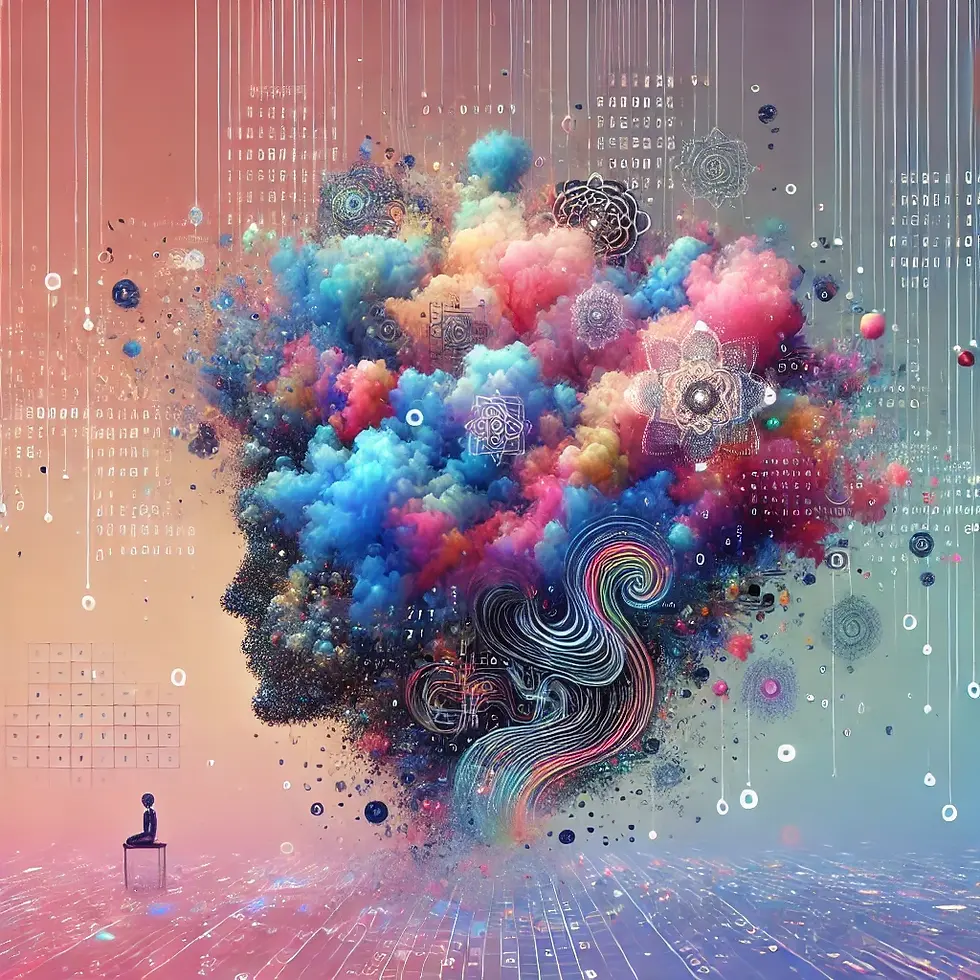
AI in the Visual Arts
Artificial intelligence is also revolutionizing the visual arts, enabling the creation of works that challenge the boundaries of traditional creativity. Tools like DALL-E, Midjourney, and Stable Diffusion allow users to generate complex, innovative images from simple text prompts, democratizing the creative process.
One notable example is the Cyberpunk: Momotaro manga, whose illustrations were entirely created by Midjourney. What would normally take a year to produce was completed in just six weeks, demonstrating AI's potential to accelerate the creative process. However, this advancement is not without controversy. The use of human artists' works to train these AI models without permission has raised significant ethical and legal questions [14].
Another controversial case was Jason M. Allen’s victory in an art competition with his work Space Opera Theater, created with Midjourney. Despite winning, the revelation that the work was AI-generated sparked heated debates about the legitimacy of such awards in a context traditionally reserved for human artists [15].
Additionally, Netflix launched an anime short in which the backgrounds were entirely generated by AI, though later validated by humans. This project was criticized for using art available on the internet without proper credit or permission, raising concerns about the exploitation of pre-existing artistic works [16].
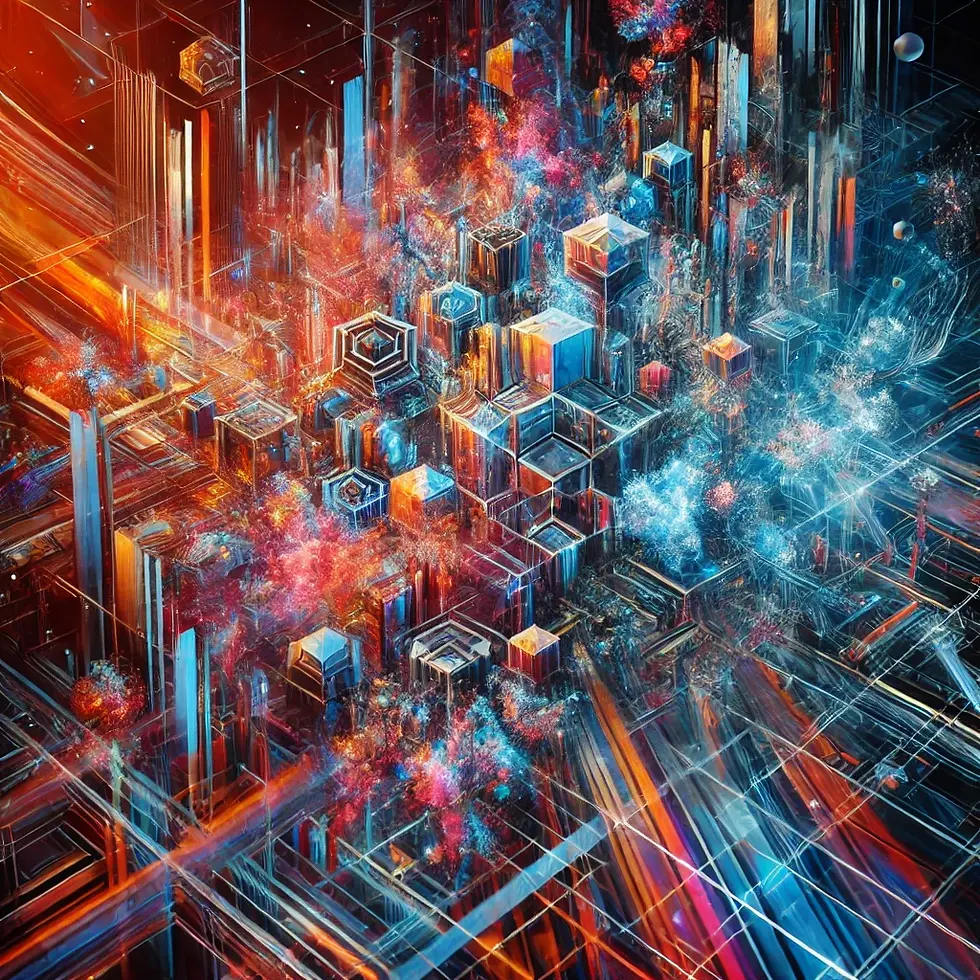
Counterpoints: How AI Can Strengthen Human Connection
AI as a Tool for Creative Amplification
Refik Anadol is an artist known for using AI to create immersive visual installations. His work Machine Hallucinations: Nature Dreams (2021), exhibited at the König Galerie in Berlin, uses over 300 million nature images processed by a generative AI algorithm (GAN) to create dynamic data sculptures. The installation was described as a “digital sculpture/painting” that explores the intersection of human consciousness, nature archives, and machine intelligence. Anadol is often referred to as a "technological visionary" due to his pioneering approach in using AI and NFTs (non-fungible tokens) in the world of digital art [17, 18, 19].

AI as a Co-Authoring Tool
Holly Herndon, a Berlin-based musical artist, developed Holly+, an AI model that allows users to create music using her voice. Released in collaboration with the Herndon Dryhurst Studio, Never Before Heard Sounds, and Voctro Labs, Holly+ was showcased at the Sónar Festival in 2021. The project uses neural networks trained with Herndon’s vocal recordings and a Berlin choir, enabling real-time music generation or from scores submitted by users [20, 21].
In a 2022 interview with NPR, Herndon stated that AI can “amplify the power and art of the voice,” emphasizing her belief in collaboration between humans and machines [22]. Additionally, Herndon and her partner, Mat Dryhurst, launched the Spawning project in 2022, allowing artists to choose whether or not to include their works in AI training datasets, reinforcing ethical collaboration [20].
Released in 2016, Sunspring is a science fiction short film entirely written by an AI called Benjamin, a long-short term memory recurrent neural network (LSTM), developed by filmmaker Oscar Sharp and AI researcher Ross Goodwin. Produced for the 48-hour challenge at the Sci-Fi-London festival, the film stars Thomas Middleditch, Elisabeth Grey, and Humphrey Ker in a futuristic plot involving a love triangle. The script, though often incoherent, was transformed into an intriguing film through human efforts in direction and acting, gaining notoriety for its "poetic strangeness" [23, 24, 25].
Alternative Narratives: The Myth of the Creator-Algorithm
PromptBase is a platform that functions as a marketplace for AI prompts, allowing users to buy and sell prompts for tools like Midjourney, Stable Diffusion, and ChatGPT. The platform is described as having over 200,000 prompts created by experts, helping to generate high-quality outputs [26]. Some argue that "prompters" are the new artists, as creating effective prompts requires creative skill. However, authorship of the AI-generated works remains controversial, as the final result depends on the algorithm, not just the prompt [25].
Daito Manabe, a Japanese artist and co-founder of Rhizomatiks, uses algorithms in live performances, often integrating real-time data such as brain activity or body movements to create audiovisual experiences. His performance Dissonant Imaginary (2022), in collaboration with the Kamitani Lab, uses MRI data to generate visual images based on brain activity, exploring the relationship between sound and imagination, but the focus remains on the human presence of the performer [27, 28]. Manabe has also worked with artists like Björk and Ryuichi Sakamoto, using mapped projections and augmented reality in live performances [29].
The Future of AI and Human Connection: Between Dematerialization and Neo-Romanticism
The Rise of the "Curator Artist"
In a post-AI world, the artist can reinvent themselves as a curator of algorithms, selecting and editing works generated by machines.
The idea of artists as curators of AI-generated art is valid and is being explored in various contexts. For example, the Nasher Museum of Art at Duke University held the exhibition Act As If You Are A Curator: An AI-Generated Exhibition (September 9, 2023, to February 18, 2024), using ChatGPT from OpenAI to plan an exhibition. This demonstrates how AI can assist in curation, with humans guiding the selection and contextualization of works [30].
The platform Runway ML is a robust tool for creating and editing AI-generated videos. It offers features like generating videos from text or images, background removal, lip-syncing, and creating 3D textures. A practical example is the story of a filmmaker who used Runway ML to generate a film in 48 hours, combining image generation and editing to create an animatic [31]. This confirms that curating AI-generated content is a creative act.
Other examples include the project The Next Biennial Should Be Curated by a Machine (2021), a collaboration between the Whitney Museum of American Art and the Liverpool Biennial, where the B3(NSCAM) software generated 64 curatorial concepts from databases, with humans refining the results [32, 33].
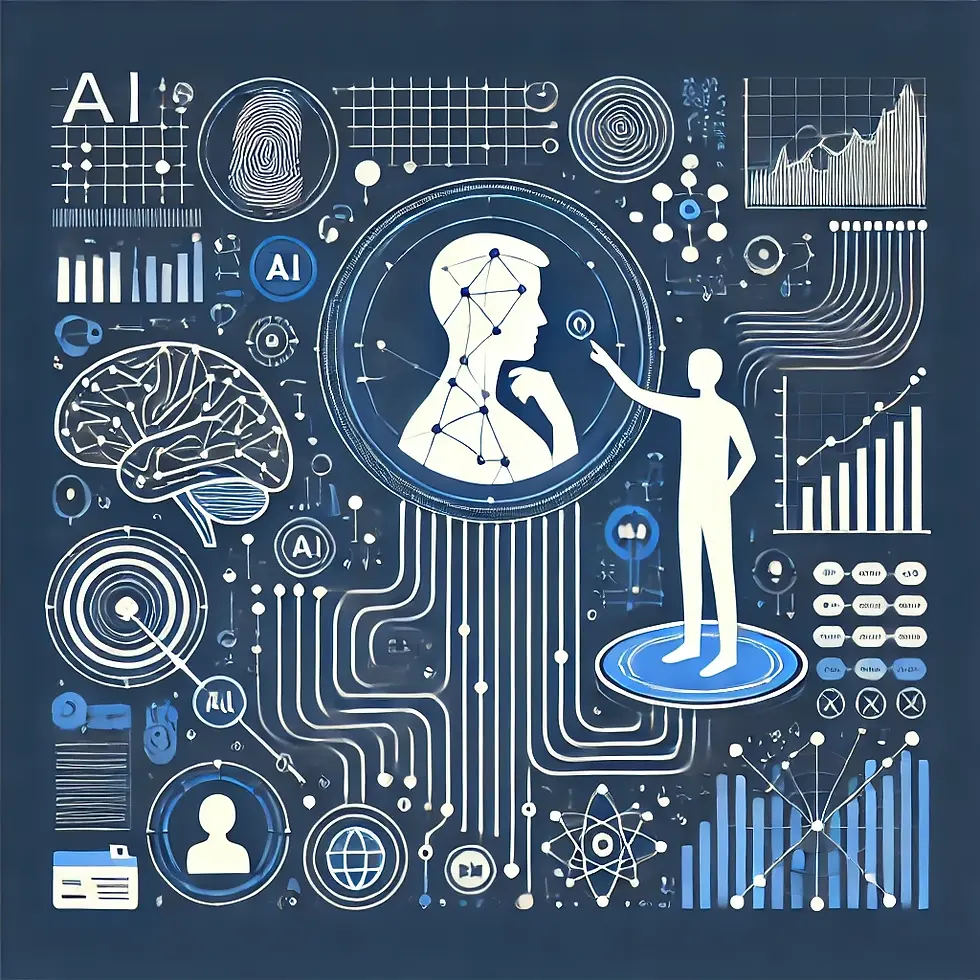
Neo-Romanticism: The Nostalgia of the Human
The technical perfection of AI creations, such as images generated by Midjourney or music by algorithms, may highlight the value of human imperfections, which carry emotion and history. AI may intensify the desire for works with "marks of struggle," like handmade sculptures or intimate diaries, opening space for movements like Slow Art and Craft Revival, which reject mass production and value human imperfections.
The Slow Art movement, initiated in 2008 by Phil Terry with Slow Art Day, aims to encourage museum visitors to spend more time appreciating works of art, rather than quickly browsing exhibitions. Studies show that the average time spent observing a work of art is less than 30 seconds (28.63 seconds at the Art Institute of Chicago, 2017), and Slow Art seeks to combat this trend, promoting a deeper connection with art [34]. The movement is part of a broader "slowness" trend, inspired by Carl Honoré’s book In Praise of Slow (2004), which advocates doing things at the right pace [35].
In relation to the 19th-century Arts and Crafts movement, led by figures like William Morris and John Ruskin, the 20th and 21st-century Craft Revival values handmade craftsmanship in response to mass production. Since the 1950s, the movement has gained strength, with artisans creating unique objects that combine aesthetics and functionality. Today, the internet facilitates the dissemination of handcrafted products, with platforms like Etsy connecting artisans to global consumers [36, 37].
AI as a Cultural Mirror
Cultural variation in AI acceptance reflects differences in social and historical values. In South Korea, the rapid adoption of technology in entertainment, such as the use of holograms in K-pop, may facilitate AI integration. A 2023 Statista study indicates that K-pop has global acceptance, with music being a key factor in its popularity, which could facilitate AI acceptance [38, 39]. Furthermore, a 2023 KPMG survey showed that 98% of South Koreans are familiar with AI, suggesting a comfort with the technology [40].
In Brazil, the strong cultural tradition in genres like samba, pagode, sertanejo, rap, and bossa nova, which value human expression, may generate resistance to AI in music.
Final Considerations: The Paradox of Authorship in the Algorithmic Era
Artificial intelligence sketches an ambiguous horizon for artistic connection: while it dissolves creative boundaries, it exposes the irreducible nature of the human bond with art. The case of Portrait of Edmond de Belamy (2018) inaugurated an era of ghostly authorship, where algorithms sign works, but the reaction to Heart on My Sleeve (2023) revealed a paradox: the public avidly consumes algorithmic creations but rejects their narrative emptiness. This tension between technical fascination and emotional lack encapsulates the heart of the contemporary dilemma.
The Aura Crisis: Data, Neuroscience, and the Inhuman
Studies in neuroimaging published in Frontiers in Psychology (2025) confirm what Walter Benjamin intuited: human works activate empathy circuits (medial prefrontal cortex), while AI pieces stimulate only visual recognition. This neurobiological disconnect explains why projects like The Velvet Sundown—a fully algorithmic band with 1 million monthly listeners—generate technical admiration but no devotion. Acceptance increases when AI is anthropomorphized, as in poetry imitating Plath, but even "perfect" verses fail to replicate the trace of human experience that turns Sylvia Plath into a myth.
Creative Contradictions: When AI Strengthens the Human
The cases of Refik Anadol and Holly Herndon demonstrate that AI can be a tool for symbolic amplification, not replacement: i) Anadol transforms 300 million images into data sculptures, but its value stems from the human narrative of "technological pioneer"; ii) Holly+ allows musical co-authorship with Herndon’s voice, yet her Spawning (2022) project advocates for ethical consent in algorithm training, reinforcing human agency.
These examples confirm Bourdieu's argument: AI is a new agent in the cultural field, but symbolic capital remains tied to the figure of the artist.
Ethical Battles and Neo-Romanticism
The controversy surrounding the Cyberpunk: Momotaro manga (created in 6 weeks via Midjourney) and Jason M. Allen's victory at the Colorado State Fair with Space Opera Theater exposes an irreconcilable conflict: i) Accelerated production destabilizes artistic markets; ii) Unauthorized appropriation of styles in training datasets violates copyright.
The response arises in movements like Slow Art—which advocates for slow contemplation—and Craft Revival, where platforms like Etsy value manual flaws as marks of authenticity.
The Future: Curation, Culture, and New Myths
Algorithmic curation, exemplified by the The Next Biennial Should Be Curated by a Machine project, signals a paradigm shift: the artist becomes a shaman of codes, selecting and ritualizing AI outputs. However, acceptance varies based on cultural terroir: in South Korea, where K-pop idols' holograms normalize the post-human, AI’s acceptance in music is easier; in Brazil, traditions like samba and cordel literature will resist dematerialization due to their corporeal roots.
The Last Human Stronghold
AI will not eliminate the cult of the artist; it will reconfigure it. As Horkheimer and Adorno (1947) [6] warned, art is the last stronghold of resistance when it carries "marks of suffering and rebellion"—something unattainable for algorithms. Vilém Flusser’s concerns echo with renewed urgency: technology forces us to rethink what it means to be human [41]. In this rethinking, we discover that artistic connection is not about perfection, but about presence: the hand that trembles while sculpting, the voice that cracks while singing, the biography that turns ink into blood. As we seek mirrors of our condition—fragile, imperfect, and mortal—the artist will remain indispensable. AI's greatest work may be revealing that, in the end, we only care about what makes us desperately human.
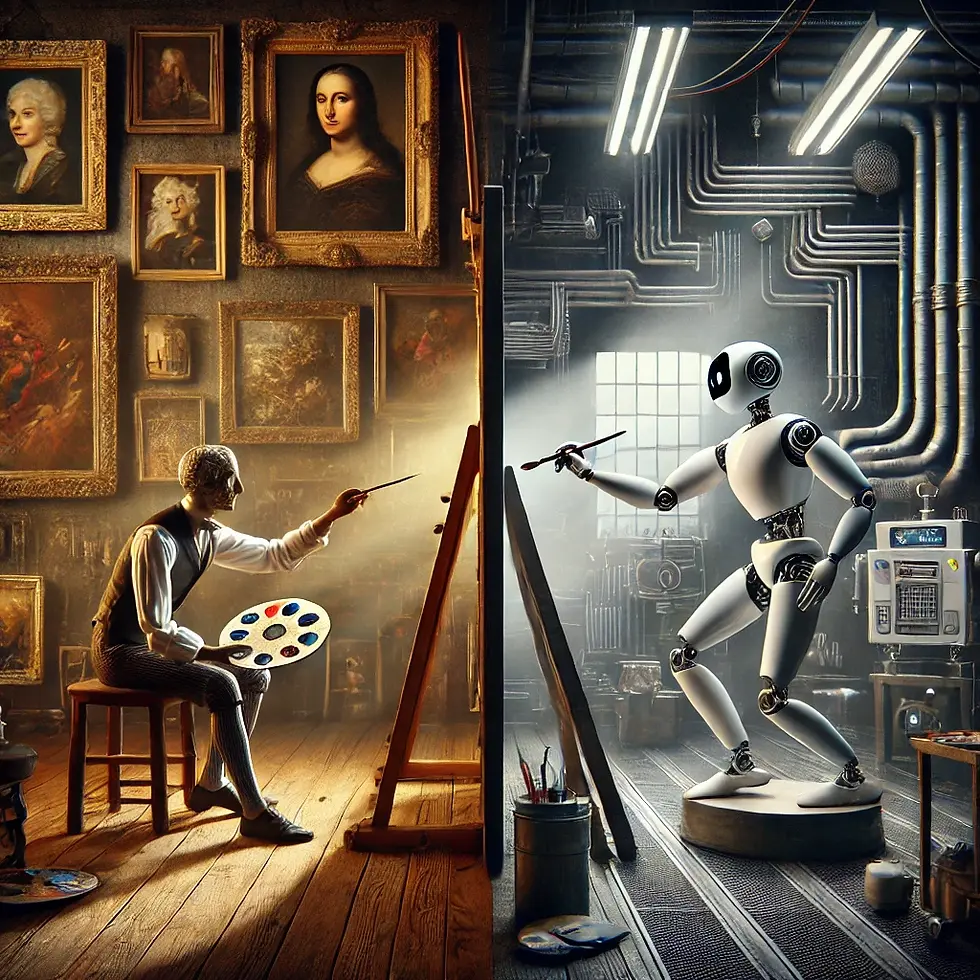
References
Artnet (2018): The First AI-Generated Portrait Ever Sold at Auction Shatters Expectations, Fetching $432,500—43 Times Its Estimate. Available at: https://news.artnet.com/market/first-ever-artificial-intelligence-portrait-painting-sells-at-christies-1379902
The New York Times (2023): An A.I. Hit of Fake ‘Drake’ and ‘The Weeknd’ Rattles the Music World. Available at: https://www.nytimes.com/2023/04/19/arts/music/ai-drake-the-weeknd-fake.html
CNN (2023): The viral new ‘Drake’ and ‘Weeknd’ song is not what it seems. Available at: https://edition.cnn.com/2023/04/19/tech/heart-on-sleeve-ai-drake-weeknd/index.html
Barthes, R. (1967). The Death of the Author. Saraiva, 2004.
Benjamin, W. (1936). The Work of Art in the Age of Its Mechanical Reproducibility. Available at: https://www.marxists.org/portugues/benjamin/1936/mes/obra-arte.htm
Horkheimer, M., & Adorno, T. W. (1947). Dialectic of Enlightenment. Available at: https://www.marxists.org/portugues/adorno/1947/06/dialetica_esclarecimento.pdf
Frontiers in Psychology (2025). Human perception of art in the age of artificial intelligence. Available at: https://www.frontiersin.org/journals/psychology/articles/10.3389/fpsyg.2024.1497469/full
Frontiers in Psychology (2025). Human creativity versus artificial intelligence: source attribution, observer attitudes, and eye movements while viewing visual art. Available at: https://www.frontiersin.org/journals/psychology/articles/10.3389/fpsyg.2025.1509974/full
Bourdieu, P. (1993). The Field of Cultural Production. Columbia University Press.
Forbes (2025): Is That Even A Real Band? How AI Created A Viral Music Sensation. Available at: https://www.forbes.com/sites/michaelashley/2025/07/14/is-that-even-a-real-band-how-ai-created-a-viral-music-sensation/
Science Direct (2022): Human, I wrote a song for you: An experiment testing the influence of machines’ attributes on the AI-composed music evaluation. Available at: https://www.sciencedirect.com/science/article/abs/pii/S0747563222000619
Science Direct (2024): Musician-AI partnership mediated by emotionally-aware smart musical instruments. Available at: https://www.sciencedirect.com/science/article/pii/S107158192400123X
Psicology Today (2024): When Good Becomes Too Good: The Curious Case of AI Poetry. Available at: https://www.psychologytoday.com/us/blog/the-digital-self/202411/when-good-becomes-too-good-the-curious-case-of-ai-poetry
Hardware.com.br (2023): Esse mangá foi criado por inteligência artificial. Available at: https://www.hardware.com.br/noticias/2023-01/manga-criado-inteligencia-artificial.html
BBC News Brasil (2022): 'Arte está morta': o polêmico boom de imagens geradas por inteligência artificial. Available at: https://www.bbc.com/portuguese/internacional-62949698
Jovem Nerd (2023): Anime da Netflix gera polêmica por usar inteligência artificial. Available at: https://jovemnerd.com.br/nerdbunker/netflix-anime-usa-inteligencia-artificial
Intramuros Magazine (2022): Refik Anadol: à quoi rêve une machine? Available at: https://www.intramuros.fr/blog/refik-anadol-a-quoi-reve-une-machine-intramuros
Refik Anadol's website (2021): Machine Hallucinations — Nature Dreams. Available at: https://refikanadol.com/works/machine-hallucinations-nature-dreams/
Centre Pompidou-Metz (2021): Refik Anadol: Machine Hallucinations. Rêves de nature. Available at: https://www.centrepompidou-metz.fr/fr/programmation/exposition/refik-anadol
Sounding Future (2024): Holly+, Holly Herndon's digital AI voice twin. Available at: https://www.soundingfuture.com/en/article/holly-holly-herndons-digital-ai-voice-twin
Ars Electronica (2022): Holly+, Holly Herndon (UM), Mathew Dryhurst, Herndon Dryhurst Studio. Available at: https://ars.electronica.art/planetb/en/holly-plus/
NPR.org (2022): Holly Herndon: How AI can transform your voice. Available at: https://www.npr.org/2022/08/26/1119220726/holly-herndon-how-ai-can-transform-your-voice
IMDb (2016): Sunspring. Available at: https://www.imdb.com/title/tt5794766/
Ars Technica (2021). Movie written by algorithm turns out to be hilarious and intense. Available at: https://arstechnica.com/gaming/2021/05/an-ai-wrote-this-movie-and-its-strangely-moving/
Digital Trends (2016): ‘Sunspring’ is an absurd sci-fi short film written by AI, starring Thomas Middleditch. Available at: https://www.digitaltrends.com/cool-tech/sunspring-ai-film-middleditch
PromptBase website (2025). Available at: https://promptbase.com/
Daito Manabe's portfolio (2025). Available at: https://daitomanabe.myportfolio.com/
LEV Festival (2022): Daito Manabe + Kamitani Lab: Dissonant Imaginary Live Av. Available at: https://levfestival.com/22/en/lev-madrid/daito-manabe-kamitani-lab-dissonant-imaginary-live-av/
Friends of Friends (2017): Daito Manabe on choreographing equations and making use of deep brain data. Available at: https://www.friendsoffriends.com/art/daito-manabe-on-choreographing-equations-and-making-use-of-deep-brain-data/
Nasher Museum of Art (2024): Act as if you are a curator. Available at: https://nasher.duke.edu/exhibitions/act-as-if-you-are-a-curator-an-ai-generated-exhibition/
Runway ML: Runway ML. Available at: https://runwayml.com/
DailyArt Magazine (2021): AI and the Art of Curating. Available at: https://www.dailyartmagazine.com/a-curating/
WIRED (2022): AI Art Is Challenging the Boundaries of Curation. Available at: https://www.wired.com/story/dalle-art-curation-artificial-intelligence/
ARTDEX (2020). Slow Art Movement. Available at: https://www.artdex.com/slow-art-movement-how-the-art-world-relearns-art-appreciation
35. Tate Etc. (2019) Slow Art in an Age of Speed. Available at: https://www.tate.org.uk/tate-etc/issue-46-summer-2019/slow-art-take-time-jonathan-p-watts
EBSCO Research Starters (2022): Arts and Crafts Revival. Available at: https://www.ebsco.com/research-starters/arts-and-entertainment/arts-and-crafts-revival
Cosimo.art (2023): Revival of Traditional Crafts: Modern Artistry Based on Time-Honoured Techniques. Available at: https://cosimo.art/blog/traditional-crafts-revival/
Music Business Worldwide (2025): South Korea’s Largest Music Copyright Collective. Available at: https://www.musicbusinessworldwide.com/south-koreas-largest-music-copyright-collective-just-banned-registration-of-songs-created-with-ai/
Statista (2025): Music Industry in South Korea. Available at: https://www.statista.com/topics/5098/music-industry-in-south-korea
Emerge (2023): People in Emerging Countries More Likely to Trust AI, Study Reveals. Available at: https://decrypt.co/125329/emerging-countries-more-artificial-intelligence-trust-ai-study
Flusser, V., & Roth, N. A. (2011). Into the Universe of Technical Images (NED-New edition, Vol. 32). University of Minnesota Press.

Comments